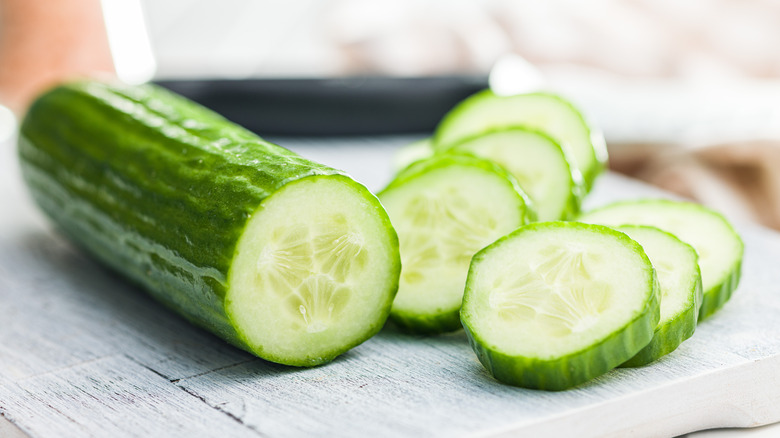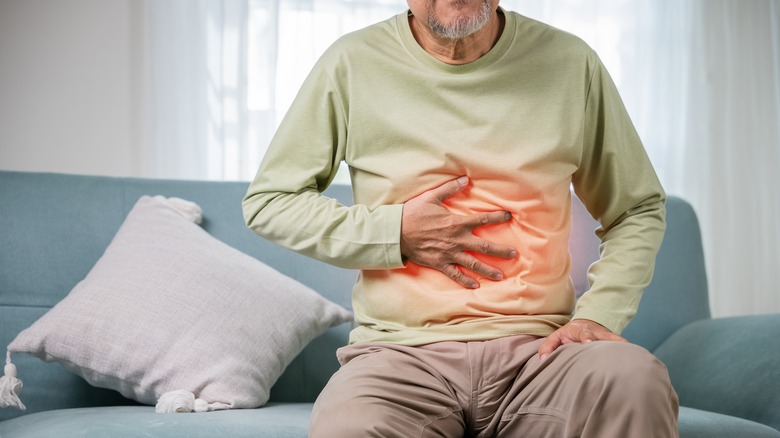Cucumbers Have Been Recalled In 14 States Due To Potential Salmonella Risk
If you've recently purchased cucumbers, you may want to think twice before consuming them. The U.S. Food and Drug Administration (FDA) published a cucumber recall announcement on June 1, 2024, for 14 states located throughout the South, along the East Coast, and in parts of the Midwest. The recall was issued after the FDA discovered Salmonella in cucumbers from the Florida company Fresh Start Produce Sales. The recall focuses on cucumbers that the company distributed between May 17 and May 21, though consumers are unlikely to know when exactly their produce was distributed.
If you live in one of the 14 states listed by the FDA and have recently purchased raw cucumbers, you should assume that they are included in the recall until you're certain that they are from a different distributor. If you'd like to find out for sure, you can contact the store you purchased the produce from and check if Fresh Start Produce Sales is one of its distributors. It's worth noting that English cucumbers and mini cucumbers are not included in the recall.
As for the cucumbers you've purchased, you can either throw them away or take them back for a refund but many of these cucumbers will likely also have made their way to restaurants. If you're concerned about accidentally getting contaminated produce in your lunch or dinner, you can ask your server if they're aware of the recall and what actions they've taken. Though Salmonella infection isn't the most common type of food poisoning in the U.S., it's garnered a nasty reputation.
How Salmonella gets into cucumbers and what the risks are
We normally associate Salmonella with raw poultry since raw chicken warrants a huge risk of Salmonella (and other bacteria) poisoning if not handled properly. In case you're wondering, cucumbers don't necessarily get infected with Salmonella through contact with raw chicken (though, theoretically, it's possible). There are two main ways that the bacteria gets into cucumbers: while it's growing and during transportation. Salmonella can travel via running water, which means it can find its way into irrigation water.
According to a 2019 study published in BMC Plant Biology, the bacteria can then make its way into the fruit when the plant's roots absorb the contaminated water. Unfortunately for us, it stays there in the cucumber waiting to be chopped up and eaten. The other way Salmonella gets into cucumbers is more about external sources. Once the cucumbers are harvested and boxed up for transportation, they are relatively safe from the elements. But improper handling can lead to contamination. Salmonella lives primarily in animal intestines and is spread through feces.
That's why it's important to wash your fruits and vegetables, but don't start peeling your cucumbers for safety reasons. Although contracting Salmonella is unpleasant, it's not likely to kill you. Within 72 hours of consumption, you can expect nausea, vomiting, stomach pains, fever, and diarrhea – the typical symptoms associated with food poisoning. These symptoms should go away on their own after a week at the most, though you should seek medical treatment if they become severe. Dehydration is a secondary consequence of diarrhea, so drink plenty of fluids.

